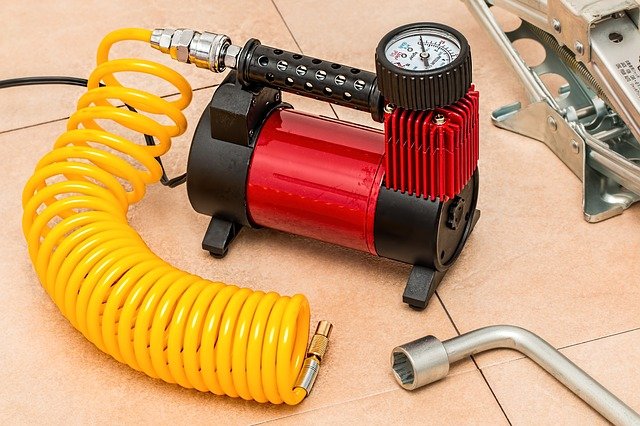Architecting Microservices: DevOps Challenges and Solutions
Software has fundamentally disrupted and transformed industries across the board – from retail to banking to entertainment and beyond. Modern businesses are now built around software-driven online services and applications used by customers every day across multiple devices. Software has also infiltrated back-end operations, supply chains, logistics, communications and more to drive greater efficiencies. Just as physical goods companies leveraged industrial automation to revolutionize manufacturing in the 20th century, companies today must leverage software automation to build/deliver their core products and services. The very nature of competition has shifted to how well companies can develop and operate software at scale.
For today’s software-driven businesses, mastering DevOps accelerates their ability to conceptualize, build and launch new digital products and experiences. It gives them a competitive advantage by removing bottlenecks in the software factory. Companies like Amazon, Netflix and Spotify that pioneered DevOps can deploy thousands of times a day to rapidly experiment and meet customer needs.
Thus, in the digital age, DevOps capability directly impacts business success. Organizations need to make investments in skills, processes and tools to transform software delivery, operations and infrastructure management – just as industrial automation transformed manufacturing. The business imperative for software productivity drives the growing importance of DevOps.
In this comprehensive blog post, I examine the key findings from a recent research paper that provides valuable insights into the architectural complexities, DevOps Services, industrial perspectives, and migration approaches for microservices systems using DevOps.
The blog summarizes the core results from a systematic literature review of 71 studies as well as industry surveys across 46 companies employing microservices and DevOps. The detailed analysis of challenges, mitigation strategies, trends, and migration steps can help engineering teams proactively architect microservices to maximize productivity gains from DevOps.
As Martin Fowler highlights, the microservices approach of decomposing applications into standalone services running in containers and orchestrated using automation and infrastructure as code can accelerate feature velocity. But organizations need to carefully manage the added complexity from distributed systems. By understanding emerging best practices documented in this research, teams can overcome key microservices architecture pain points within DevOps environments.
Key Findings from Systematic Literature Review
The researchers conducted a systematic mapping study of current literature on MSA and DevOps. They analyzed 71 studies published from 2014-2017. Below are key findings about MSA challenges and solutions:
Top Challenges
Increased Complexity
Microservices systems are complex with many moving parts. It’s challenging to model interactions between services.
Data Management
With data now distributed across services, managing transactions, consistency, and queries becomes hard.
Testing
with numerous services, testing effort increases significantly. Setting up test environments is also difficult.
Deployment
Aligning frequent code changes across many microservices and managing releases is challenging.
Operation and Monitoring
With distributed services, monitoring apps and troubleshooting problems gets complex.
Organizational Factors
MSA requires devs to be full stack and collaborate closely with ops teams – which needs cultural change.
Top DevOps Solutions in 2024
Automation
Automate builds, testing, infrastructure, deployments using CI/CD pipelines to enable rapid delivery.
Infrastructure
Use container platforms like Kubernetes and serverless computing to simplify infrastructure management.
Monitoring
Implement centralized logging, tracing, health checks, and dashboards for observability.
Service Mesh
Tools like Istio help tackle cross-cutting concerns like service discovery, routing, security.
Documentation
Maintain up-to-date docs on services, API contracts, schemas, infrastructure, etc.
Testing
Implement test automation, contract testing, centralized test harnesses, and mock services.
Emerging Trends
The researchers identified these upcoming trends that can shape MSA adoption:
· Serverless computing to reduce infrastructure management
· Service mesh becoming mainstream
· Increased research on cloud native patterns
· Development of MSA reference architectures
· New methods for end-to-end testing and monitoring
Key Findings from Industrial Surveys
The researchers also surveyed 46 companies using MSA and DevOps about the top challenges faced. Here are the key results:
Top Challenges
· Lack of organizational alignment and skills
· Complexity in architecting the system
· Difficulty monitoring and troubleshooting issues
· Integration challenges between microservices
· Scaling up microservices
· Top Mitigation Strategies
· Automating deployments and infrastructure
· Implementing centralized logging and monitoring
· Creating smaller, decoupled services
· Using service mesh or API gateway
· Frequent communication and collaboration
· Migrating from Monoliths to Microservices
It involves identifying domain boundaries, extracting services incrementally, re-architecting databases, and implementing DevOps automation. Companies also need to overhaul org structure, processes, and skills.
Key migration steps:
· Audit existing monolith code and data
· Identify functional domains and bounded contexts
· Start extracting backend services around domains
· Shift authentication, logging to separate services
· Break up frontend into reusable components
· Move data storage to distributed databases
· Set up API gateway and messaging infrastructure
· Automate infrastructure, builds, tests, deployments
· Refactor processes, teams, and org structure
MSA and DevOps can accelerate delivery but also introduce multiple architecture concerns. Solutions involve extensive automation, distributed data management, monitoring, containerization and organizational change. Companies migrating from monoliths need incremental extraction of services while implementing continuous delivery pipelines.
By proactively architecting for MSA with DevOps, engineering teams can reap the benefits of greater agility, reliability and scale. The research provides valuable insights into challenges, solutions, emerging technologies, and migration approaches.
Organizations adopting microservices and DevOps need to carefully plan their architecture evolution to avoid pitfalls. Teams should evaluate MSA reference architectures and work closely across disciplines to make the cultural shift successful.






